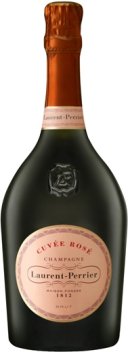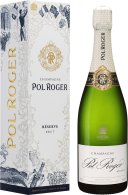Domaine du Pélican Arbois St Laurent Pinot Noir
Product Description: A pale red with serious intent—Jura in all its ethereal glory. Domaine du Pélican’s 2023 Poulsard is as beguiling as the grape itself: translucent in the glass yet full of energy, character, and gastronomic charm. Made from old vines across Arbois and Montigny-lès-Arsures, including parcels once tended by Jura icon Jacques Puffeney, this cuvée has become a staple of the estate since 2015. Vinified gently with full destemming and no punch-downs, then aged in stainless steel to preserve freshness, this is a wine that embraces its light hue and expressive aromatic profile. The 2023 vintage, shaped by a warm end to the season, delivers lifted red berries, rose petals, and earthy spice. Don’t let the colour fool you—there’s depth and precision beneath the surface. Best served slightly chilled, this Poulsard plays beautifully with charcuterie, mushroom risotto, or a classic roast quail. Also a joy to drink solo, when its gossamer touch and layered aromatics really shine. Tasting Notes NOSE – Bright and floral Strawberries, dried roses and a whiff of liquorice, underpinned by earthy spice and crushed herbs. PALATE – Silken and savoury Delicate yet vibrant, with cranberry and wild strawberry flavours, fine tannins, and subtle herbal lift. FINISH – Lingering and graceful Airy and aromatic, fading slowly with notes of red tea, florals, and soft spice. Finer Details Style - Red Wine Varietal - Pinot Noir Country - France Region - Jura Vintage - 2023 Bottle Size - 750ml ABV - 13%
Laherte Frères Blanc de Blancs Nature Champagne Non-Vintage
Laherte Frères Blanc de Blancs Nature is made with the best parcels of Chardonnay (located on the south slopes of Epernay and the Côte des Blancs). This wine is very representative of the purity and the minerality of the Chardonnay.
Laurent Perrier Rose
'Rose were for long regarded as the illegitimate offspring of Champagne, recipients of coarse, heavy pressings wines partially masked by high dosage levels. Today they are routinely priced above 'normal' NV (or vintage) blends and are carefully made. Whether they really merit the premium is irrelevant: the market has spoken. But Laurent-Perrier is a special case: this is 100% pinot noir, rather than a blend coloured by pinot noir red wine. The full salmon colour is an immediate indication of its provenance, the bouquet complex and alluring, leading directly into the cherry and strawberry flavours of the long, sustained palate; excellent finish and aftertaste.' - 95 points, James Halliday Top 100
Billecart-Salmon Brut Réserve
Billecart-Salmon Brut Réserve is one of the most popular of all non vintage Champagnes. Billecart is renowned for its purity of fruit and fine, elegant structure. A beautiful aperitif style. Once described as like tiny diamonds exploding on the tongue.Every effort is made to include a gift box with delivery, however this cannot be guaranteed.
Larmandier Bernier Latitude Non-Vintage
Latitude is a 100% Côte de Blancs Chardonnay, predominantly grown, as it always has been, in vineyards on the southern side of Vertus. These are vineyards on roughly the same
Pol Roger Brut
An impressively rich, dry style from one of the oldest and most distinguished Champagne houses. Pol Roger Brut is perfect both as an occasion wine or for impromptu celebrations.
Taittinger Brut Réserve Champagne
Typical of the Taittinger "house" style, their non vintage Champagne is superbly well-balanced and easy to drink. Smoothly textured with delicate fruit flavours and subtle toasty yeast characters it is an ideal aperitif.
Taittinger Prestige Rosé Non-Vintage
The Taittinger Prestige Rose is a unique and complex blend. The signature Taittinger high proportion of Chardonnay (30%) brings elegance and delicacy to the blend, while a quantity of still red wine (15%) produced from the best Pinot Noirs from Montagne de Reims and Les Riceys is added to the final blend. It is this still red wine that gives the cuvee its unmistakable colour and vibrant intensity on the palate. The Prestige Rose can be described as lively, fruity, fresh and elegant.
Moët & Chandon Ice Impérial
Fresh and flavoursome, Moët & Chandon Ice Impérial is perfect for spritzing up a sunny afternoon or adding an elegant tone to any dinner party. Flavours of fresh citrus and stone fruits with ravishing acidity and length.
Perrier Jouet Blanc de Blancs
Perrier-Jouet is one of France's most historic and distinctive champagne houses. With over 200 years of producing elegant floral champagnes from the chardonnay grape, the Perrier -Jouet family has an obsession with quality. Since the 18th Century, the champagne house has only had 7 Cellar Masters. In the mouth the wine is fresh, tangy and invigorating with a mineral intensity on the finish. This is a vivacious wine of immense energy and vitality.















